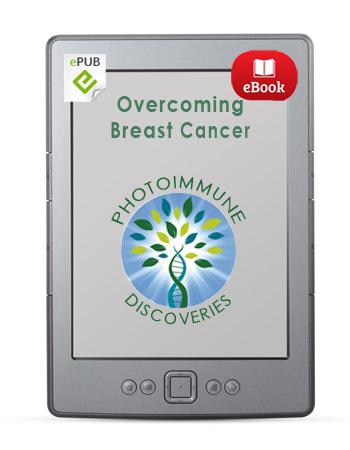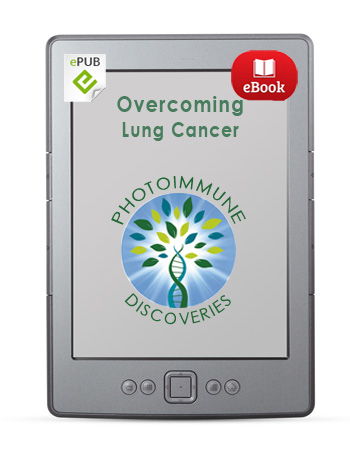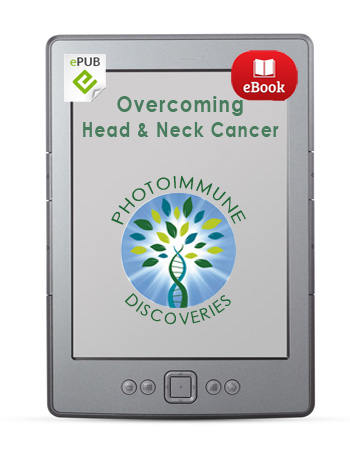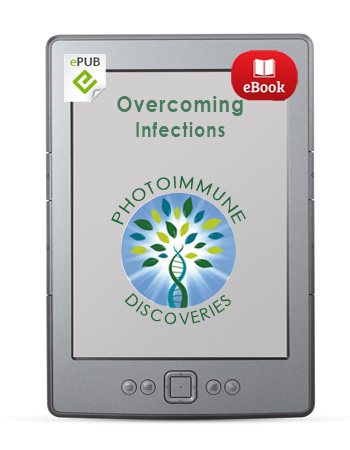Description
Overcoming Bladder Cancer:
The Promise of Photodynamic Therapy and Other Innovative Therapies
Bladder cancer, otherwise known as urinary bladder carcinoma, is a disease that has been strongly linked with modern lifestyles and environmental pollution. This cancer is about three times more common in men than women, and is found mainly in elderly people, with about 80% of new cases occurring in individuals age 60 or older. Coffee drinkers may have a moderately elevated risk of bladder cancer.
Bladder cancer has been called the most expensive cancer on Earth due its extremely high recurrence rate. It is estimated that 50%–70% of all non-muscle-invasive bladder tumors will recur after being “successfully treated” (i.e., after the tumor has been completely removed). At five years, the recurrence rate approaches 80%! For this reason, scientists are attempting to identify low- or moderate-cost treatments that can help reduce this whopping recurrence rate. We believe that light-based therapies, specifically those that employ the right photosensitizing agents (see the mention of Bremachlorin, below), can help turn this situation around.
Overcoming Bladder Cancer: The Promise of Photodynamic Therapy and Other Innovative Therapies highlights a new approach to the treatment of bladder tumors, one rooted in the astounding cancer-fighting potential of Photomedicine (light-based medicine). Though the therapeutic applications of light date back many centuries, it is only within the past few decades that high-tech developments in laser technology as well as non-laser light have enabled the medical profession to realize the true healing potential of light.
Overcoming Bladder Cancer is divided into four parts: (1) Understanding and Treating Bladder Cancer; (2) The Photomedical Approach to Bladder Cancer ; (3) Promising Research Directions; and (4) Long-Term Control: Lifestyle Factors for Preventing Recurrences and Sustaining Remissions.
Part 1 explores the complex epidemiology of bladder cancer, addressing both environmental and genetic factors thought to play a role in the genesis of bladder cancer. Types of bladder cancer are then reviewed, along with the mainstream strategies for detection and treatment. Various types of surgical treatment for bladder cancer are described and laid out, with a primary focus on the most common form of bladder cancer, non-muscle-invasive bladder cancer.
This type of bladder cancer is typically diagnosed with the help of cystoscopy, a procedure in which the inside of the bladder is examined and the tumors are removed. However, flat lesions (carcinoma in situ) are often missed with this approach, thus setting the stage for recurrences months or years later.
Parts 2 and 3 will likely attract the greatest attention, as these parts address the various applications of Photomedicine while also explaining how such applications can either enhance conventional treatments or compensate for some of the limitations of those treatments. As explained in Part 2, photodynamic methods can enable surgeons to better see and treat the the smaller and flatter bladder tumors, thus leading to more effective treatment and better long-term treatment outcomes.
Given the bladder’s hollow structure, it should come as no surprise that scientists interested in targeted light-based therapies would want to explore using photodynamic therapy (PDT) to treat conditions such as bladder cancer. The interior of the bladder is readily accessible with the help of endoscopy (a scope that is passed through the urethra), and most bladder tumors are superficial, occurring on the mucosa or submucosa of the bladder wall. Light is then directed through the scope onto the diseased areas, resulting in the destruction of malignant tissue.
As this ebook clearly shows, PDT has a number of specific advantages over conventional surgery for bladder cancer. To begin with, it is non-invasive, or at least less invasive than surgery. Along the same lines, PDT does not carry any of the potential adverse effects of surgery, including the increased risk of recurrences or metastasis due to the surgery itself. Moreover, unlike surgery, PDT entails little or no scarring after the site heals. And finally, PDT lacks any of the long-term side effects that have been seen with chemotherapy and radiation treatments. Indeed, unlike radiotherapy, PDT can be repeated many times at the same site, if needed. When used properly, it usually takes only a short time and is often done on an outpatient basis.
Light-based diagnosis is another major focus of this ebook. The limitations of conventional cystoscopy have paved the way for using photodynamic diagnosis, or photodiagnosis, which was first reported over 40 years ago, and which has been in vogue since the 1990s. Upon exposure to blue-violet light, spots of cancer will appear red using the ALA-based approach to photodiagnosis. Areas of cancer can then either be removed surgically or treated “on the spot” with focused light, thus bridging photodiagnosis with PDT. This is sometimes referred to as a “see and treat” approach to diagnosis, and it appears to significantly reduce the rate of bladder cancer recurrences.
Researchers from the Academic Medical Center in Amsterdam recently concluded that PDD significantly improved the detection of bladder cancer when compared to the standard approach (white light cystoscopy), and it has proven to be more effective for the diagnosis of localized bladder cancer and carcinoma in situ. PDD is also very helpful in cases where a surgeon cannot see the tissue that needs to be excised. This is known as the surgical margin, and it is a major reason why the success of white light cystoscopy can be short-lived. By using PDD, the surgical margin can be seen more accurately.
Cost is another major consideration. In general, PDT costs considerably less than other bladder cancer treatments. By using the approach known as immuno-PDT, it may also be possible to greatly lower the risk of recurrences. This would translate into huge cost savings for the patient, and would of course dramatically reduce the stress associated with recurrences.
Excerpt from the book:
“The specific choice of photosensitizer could prove critical to the success of PDT in treating bladder cancer. For example, studies of locally applied (intravesical) ALA have found durable, complete response rates of 52%–60% at two to three years. These response rates were achieved for patients with bladder cancer in situ, for whom conventional treatments had previously failed. The ALA-guided PDT did not produce any of the prolonged skin photosensitivity that has been experienced with another popular photosensitizer: systemic porfimer sodium.
“Along these lines, there is some evidence that chlorin-based photosensitizers may be the most effective choice for the treatment of advanced bladder cancer. This could be particularly helpful when standard treatment options fall short. Researchers in Seoul, Korea recently reported on the use of Bremachlorin to treat patients with high-grade non-muscle-invasive bladder cancer. These patients were not responding well to the standard treatment using BCG therapy, and they were refusing to undergo standard surgery (radical cystectomy). For these patients, the recurrence-free rates were 91% at one year, 64% at two years, and 60% at 2.5 years. The researchers concluded that PDT with Bremachlorin is a safe and effective approach for bladder cancer patients who are either unresponsive or intolerant of the standard BCG therapy.
“As you can see, photodynamic principles can be successfully applied to both diagnosis and treatment of bladder cancer. But finding the optimal photosensitizer is a key piece of the photodynamic puzzle, and there is now a growing body of research suggesting that Bremachlorin may be highly effective against a range of cancers.
“The initial research on PDT for bladder cancer has been promising. If PDD is used to detect bladder cancer, it makes sense that PDT could be implemented right away, since the tissue is already glowing (during PDD) and therefore would lend itself to prompt photodynamic treatment. This represents a logical coupling that could be exploited in future attempts to treat this very persistent and cost-intensive form of cancer.”






 English
English Français
Français Deutsch
Deutsch Nederlands
Nederlands